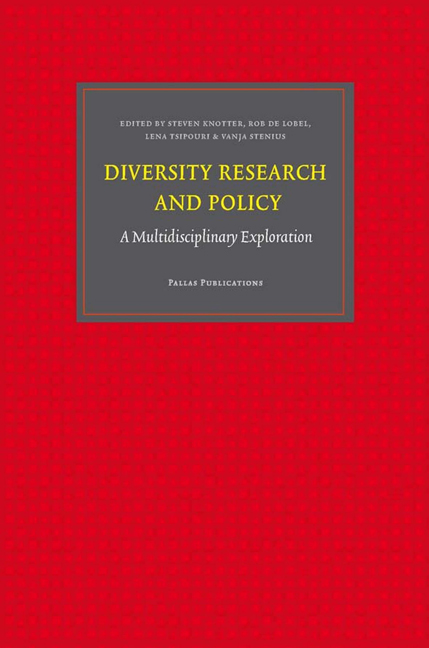Book contents
- Frontmatter
- Contents
- Acknowledgements
- 1 An Introduction
- 2 Diversity and Social Anthropology
- 3 Diversity and Sociology
- 4 Diversity and Criminology
- 5 Diversity and Ecology/Ecological Economics
- 6 Linguistic Diversity
- 7 Diversity and Architecture
- 8 Diversity and Urban Planning
- 9 Diversity and Economics
- 10 Diversity and Diversity Management in Business and Organisation Studies
- 11 Diversity and (Organisational) Psychology
- 12 Diversity and Law
- 13 Diversity and Public Policy
- 14 Conclusion
- About the Authors
- About the Reviewers
6 - Linguistic Diversity
Published online by Cambridge University Press: 15 January 2021
- Frontmatter
- Contents
- Acknowledgements
- 1 An Introduction
- 2 Diversity and Social Anthropology
- 3 Diversity and Sociology
- 4 Diversity and Criminology
- 5 Diversity and Ecology/Ecological Economics
- 6 Linguistic Diversity
- 7 Diversity and Architecture
- 8 Diversity and Urban Planning
- 9 Diversity and Economics
- 10 Diversity and Diversity Management in Business and Organisation Studies
- 11 Diversity and (Organisational) Psychology
- 12 Diversity and Law
- 13 Diversity and Public Policy
- 14 Conclusion
- About the Authors
- About the Reviewers
Summary
A Brief Description of the Discipline of Linguistics
The discipline of linguistics can be defined as the systematic study of language(s), its nature, its structure and the variation in and between languages. Language permeates, gives direction to and in many ways determines human experience. Linguistics as a discipline is closely related to sociology, anthropology and psychology. The main intellectual thrust in linguistics has shifted from historical work at the beginning of the twentieth century to currently three predominant areas of focus:
1 language systems (semantics, syntax, phonetics/phonology),
2 the processes of language acquisition, and
3 language in culture and society.
Variation and diversity within and between languages can be studied under any of these three areas. Here we will focus on the third area: diversity in languages in culture and society.
Language diversity and multilingualism are closely related concepts, sometimes used synonymously or interchangeably. However, language diversity usually refers to the number and variation of languages and multilingualism to the use of more than one language in a given society as well as the proficiency in more than one language by individuals. ‘Plurilingualism’ is a term also used for the latter, among others by the Council of Europe.
Already in the 1950s, Greenberg (1971) devised different measurements of linguistic diversity. He started with a simple index relating to the chance that two random members of a community speak the same language. He then further took into account the factors of linguistic distance and of ‘polylingualism’ (speakers who command two or more languages). A linguistic diversity index must take into account several factors such as the unit of analysis or the probability of finding speakers. Factors to consider are the number of languages (richness), the distribution of languages (evenness) and the distance between languages (distance) (Van Parijs 2006). Several other indices for linguistic diversity could be constructed based on economic theories, as has been shown for bio-ecological diversity (Maignan et al. 2003), where similar dimensions of diversity such as number, size and distinctiveness are considered.
Language communities are unequally spread across the globe. Most of the world's 7,000 languages are found in a broad belt around the equator.
- Type
- Chapter
- Information
- Diversity Research and PolicyA Multidisciplinary Exploration, pp. 83 - 98Publisher: Amsterdam University PressPrint publication year: 2012



